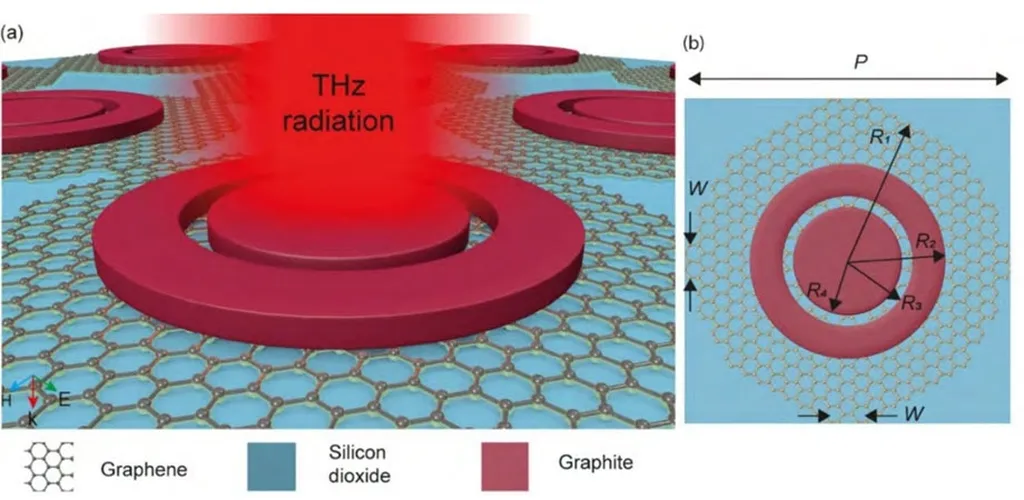In the realm of advanced materials and electromagnetic technology, a groundbreaking development has emerged from the Institute of Energy at the Hefei Comprehensive National Science Center in China. Researchers, led by Wenbing Zhang, have unveiled a novel terahertz chiral absorber that promises to revolutionize the way we manipulate and detect terahertz waves. This innovation, detailed in a recent study published in *Materials Research Express* (which translates to *Materials Research Express* in English), could have significant implications for the energy sector and beyond.
The research introduces a tunable terahertz chiral metasurface absorber based on vanadium dioxide (VO₂), a material known for its temperature-dependent properties. The metasurface achieves remarkable circular dichroism (CD) values, a measure of the difference in absorption of left-handed and right-handed circularly polarized light, at specific terahertz frequencies. “Through theoretical analysis and electromagnetic simulations, we demonstrated that our metasurface can achieve CD values of -0.909 and -0.917 at 1.82 and 3.15 THz, respectively,” explains Zhang. This means the absorber can distinguish between different polarizations of light with high precision, absorbing up to 98.8% of right-handed circularly polarized (RCP) waves while only 7.1% of left-handed circularly polarized (LCP) waves.
The dynamic tuning of the metasurface’s CD characteristics is achieved by altering the conductivity of VO₂, offering excellent control flexibility. This adaptability is crucial for practical applications, as it allows the device to be tailored to specific needs. “The physical mechanism behind the chiral response of the metasurface was thoroughly investigated, and we discussed the thermally controlled switchable near-field imaging of the array structures,” adds Zhang. This level of control and precision opens up new possibilities for terahertz chiral light detection and image encryption, areas that are increasingly important in secure communications and advanced imaging technologies.
The simplicity of the structural design is another notable aspect of this research. The metasurface’s straightforward construction makes it more feasible for large-scale production and integration into existing systems. This could lead to more cost-effective and efficient solutions for terahertz wave manipulation, a field that has been historically challenging due to the complexity and cost of traditional methods.
The potential commercial impacts for the energy sector are substantial. Terahertz technology is already being explored for applications in energy transmission, sensing, and imaging. The ability to precisely control and manipulate terahertz waves could enhance the efficiency and security of energy systems. For instance, terahertz waves could be used for non-invasive inspection of energy infrastructure, detecting faults or wear and tear in pipelines and other critical components without the need for physical intervention.
Moreover, the tunable nature of the metasurface could enable dynamic adjustments based on real-time conditions, improving the overall performance and reliability of energy systems. “This research not only advances our understanding of terahertz metasurfaces but also paves the way for practical applications that can benefit various industries, including energy,” says Zhang.
As the world continues to seek innovative solutions to energy challenges, advancements like this terahertz chiral absorber offer a glimpse into a future where technology and sustainability go hand in hand. The research by Wenbing Zhang and his team represents a significant step forward in the field of terahertz technology, with the potential to shape future developments and drive progress in the energy sector. The study, published in *Materials Research Express*, underscores the importance of continued investment in advanced materials and electromagnetic research, as these areas hold the key to unlocking new possibilities for a more efficient and secure energy future.

